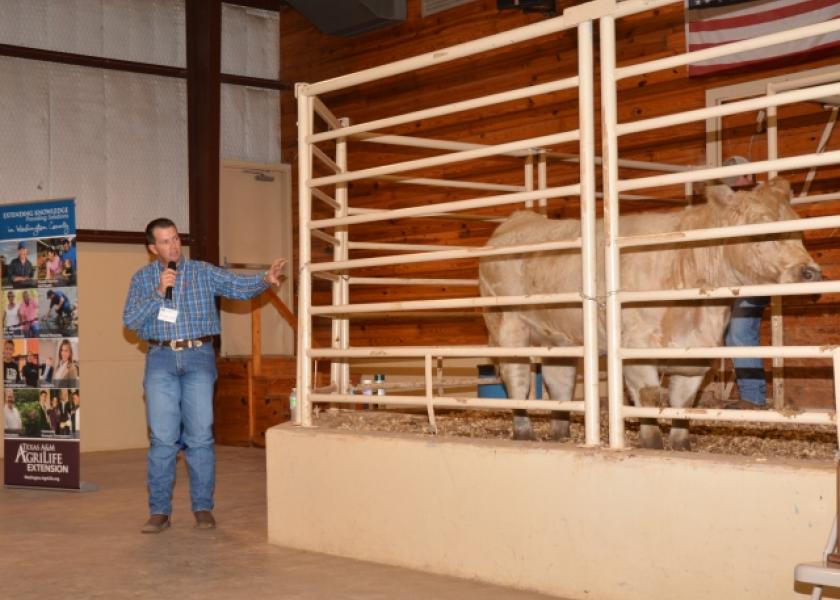Think Outside the Box When Selecting Replacement Cattle

With cattle prices at record highs, ranchers looking to build back beef cattle herds need to take careful consideration of the composition of replacement heifers to yield top-quality calves, according to experts.
By: Blair Fannin, Texas A&M AgriLife Extension Service
About 200 cattle producers attended the recent 43rd South Central Texas Cow-Calf Clinic in Brenham, Texas, hearing from a variety of experts. The event was hosted by the Texas A&M AgriLife Extension Service with support of beef and forage committees from Austin, Brazos, Burleson, Fayette, Grimes, Harris, Lee, Waller and Washington counties.
“This year we focused on heifers and took the opportunity to talk about the basics of genetics, selection, function, design, (and) utility,” said Kara Matheney, AgriLife Extension agent for Washington County. “We are at a unique time right now, where we are making some serious decisions about the quality of stock we are purchasing to restock or what we are raising as replacements.”
Doug Pierce, division chair for agriculture at Blinn College in Brenham, said cattle producers should look at a number of criteria when selecting good replacement heifers. Skeletal soundness and length of stride are among those to consider. He also said to observe things not commonly thought of.
“Look for weird things, such as width of mouth,” he said. “A wide-mouth cow will eat more and perform better. Good traits of a cow also include having a good body. She should also be a cow that cares for and can nurse her calf until weaning. I tell my students if it (the cow) can’t pay that rent check, she’s a freeloader and get rid of her.”
Jason Cleere said structure is important, and don’t select females that are post-legged or stand too straight up and down.
“Cattle that are straight, their joints start to wear out sooner,” he said. “That is a trait you do not want.”
Both Cleere and Pierce said to watch a cow’s stride. Cows that take shorter strides require more steps and can have reduced longevity. Width of pin bones is another thing to consider. Cows that are wide between their pin bones tend to have more calving ease than those with narrow openings, Cleere said.







